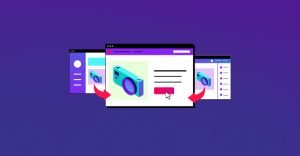How to Use Retargeting Pixels to Increase Sales

The old way of doing business online was something of a crapshoot. There wasn’t a lot in the way of tracking. You could see where a user came from, but you couldn’t see much of what they did once they were on your site, and when they left, that was it.
If a user came to your site, looked at a few products, even added one to a shopping cart and then left, the process ended. Even if that user came back later, you would have no way of knowing they were the same user. Oh, sure, cookies might tell you a bit about them, at least that they had visited before. And if you had a login for your cart, you could save their planned purchase so it was waiting when they returned.
What if they didn’t come back? What if they cleared their cookies? What if they never made an account? You’re out of luck.
You were, that is, until the advent of retargeting and remarketing.
What is Remarketing?
Remarketing is the process of tracking a person once they leave your site. Don’t worry! It’s completely anonymous, in the sense that you’re not tracking any personal information. You just see “UserSessionID22939448” or whatever, and code elsewhere on the web sees that same thing.
When a user visits a specific page on your website, special remarketing code called a Pixel executes. It drops a little piece of data on the user’s computer, just like a Cookie. In fact, it is a cookie. So, if the user clears their cookies, this doesn’t work any better than any other form of tracking. Thankfully for you, most users don’t constantly delete their cookies.
Now say that user visits another site, like Facebook. They’re browsing Facebook as normal, and Facebook is collecting data about them, also as normal. In this case, Facebook notices they have the tracking code from your website on their computer. Facebook then says “hey, that’s cool, they like X site. Let’s show them an ad for that site!”
This applies to many sites other than Facebook, of course. Also of course, the ad that displays is one you run, specifically targeted to people with your tracking code on their computer.
Why Remarketing Works
Have you ever gone to the mall, or to Amazon, and poked around window shopping when you didn’t have the budget to make a purchase? Maybe you made a mental list of items you would buy when your next paycheck hit. Maybe you decided to buy something specific with your tax return money. The thing is, all you did was make a mental note. You didn’t write it down, schedule a reminder in your phone or make any preorders or reservations.
Two days later, you find yourself looking at Amazon again, but for the life of you, you can’t remember what it is you wanted to buy. Just no idea. Drawing a complete blank.
From the business perspective, that’s a lost opportunity, a lost sale. You would have made the purchase, if only you could remember what it was you wanted to buy.
What Remarketing does is adds that reminder. The website has tracked you and finds you in places you browse frequently, like Facebook. You browse Facebook and see an ad for the website you made that mental note about the other day. You see it and suddenly, you remember what it was you wanted to buy. Now you have the money, and the time is right; you click through to the site and make your purchase.
From the business perspective, problem solved! Retargeting has converted a lost sale into a successful sale, and all it had to do was track you across the web and advertise directly to you.
If you figure that your business has a 5% conversion rate, that’s 95% of your visitors who aren’t converting. How many of those visitors would convert, given the later opportunity? Given that retargeted reminder? ComScore performed a study that showed retargeting, for some businesses, led to as many as 10x the branded searches and 7x return visits to the sites they studied.
As a bonus, retargeting isn’t just limited to your website. You can retarget people who open your emails, people who search for your brand, people who visit your Facebook page; all sorts of people. It’s just a little bit of JavaScript that puts tracking code on the computers of your visitors.
Successfully Using Retargeting
While there are many ways to use retargeting, we’ll just consider one right now: displaying your ad to people who visit your product pages, and displaying that ad on Facebook. For this, you will use Facebook’s tracking Pixel, and you will want to apply it to your product pages. Don’t apply it to every page! There’s no reason to retarget people who just visit your homepage and bounce, or people who visit your blog, or your About page.
For a more advanced version, you can retarget specifically users who visit your “added to cart” page. You can even add supplemental code to remove users who then proceed to the “successful purchase” page, so you’re not remarketing to people who made the conversion. This is called a Burn Pixel, and is a great idea.
So, what best practices can you consider for using retargeting?
- Set a frequency cap. This ensures that you’re not flooding your users with repeated ads. Doing so when they’re not in a position to buy is more likely to annoy them and drive them away.
- Change up your retargeted ads. Users get tired of seeing the same ads over and over. Change them up so they’re new and attractive again.
- Segment your retargeting and split-test advertising. Test variations on your copy and image, even your landing page. When one works better, iterate it and split test another variation.
- Mix your retargeting ads in with other demographic and geographic targeting. This further segmentation allows you to get away with more precise – and thus more compelling – advertising.
- Keep tracking your users even after retargeting, and measure how successful each attempt is.
Successful retargeting can drastically increase your conversions, but you have to avoid straying into the creepy, stalkerish behavior so reviled by the global community.
 ContentPowered.com
ContentPowered.com





